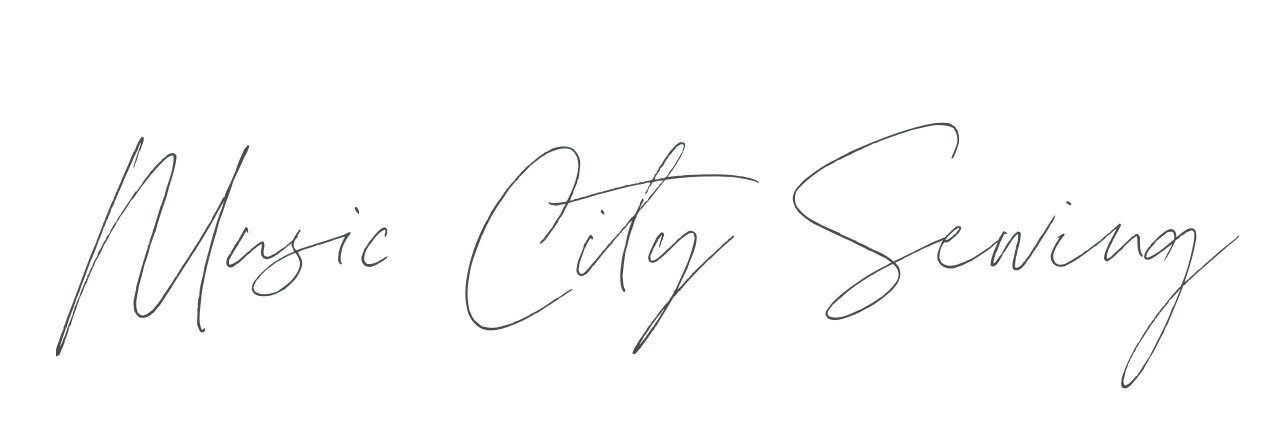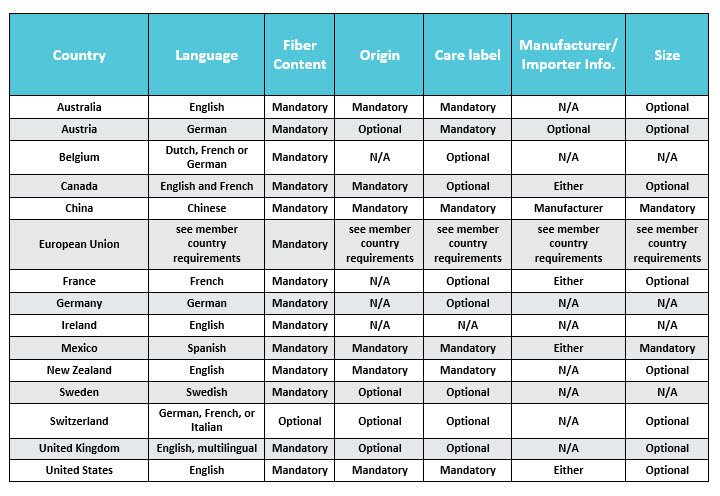How to label clothes you intend to sell
Are you already selling clothes you made? Chances are, you might have missed a very, very critical step. Don’t stress - I’m about to make you a labeling wizard. Let’s go!
Whether you’re a hobby sewist or a designer, you have to comply with labeling laws in your country if you plan to sell your work. If strangers are going to be paying for and wearing your work, both the U.S. Federal Trade Commission and Customs & Border Protection put labeling restrictions on the clothes you design, import, and create. So before you go adding your garments to your online store, posting them to Instagram, and selling them on etsy, it’s time to brush up on the rules.
There are literally only three. Two of the three are centered around the textile type, while the other identifies how garments should be labeled.
Textile Fiber Products Identification Act
This act is the main one to study up on. I’ve broken the act up into sections as they pertain to clothiers (I’ve omitted other areas of this act such as stuffed animals and drapery).
(subsecs a - d). Don’t mark/stamp/tag your clothing deceptively. Aka even if you designed it, you had the garment produced in a foreign country, and you designed the tag that goes inside of it in the US, it’s deceptive to sew a ‘Made in USA’ tag into it solely because the tag itself was in fact made in the US. This act also considers covering the original tag with another one as deceptive. It’s bad form, the fine (if you get caught) is gonna hurt, and ignoring this act could literally inflict harm on someone who is allergic to certain fibers or has had reactions from products imported from certain countries (whether it be dyes, chemicals, or other unknown surfactants).
(subsec j). Your tag must be displayed in a prominent location. Taken directly out of §70b. “Any textile fiber product shall be misbranded if a stamp, tag, label, or other identification conforming to the requirements of this section is not on or affixed to the inside center of the neck midway between the shoulder seams or, if such product does not contain a neck, in the most conspicuous place on the inner side of such product, unless it is on or affixed on the outer side of such product, or in the case of hosiery items on the outer side of such product or package.”
(subsec g). Don’t advertise or name your product after an animal skin if it does not contain that animal skin. example: “rabbit fur stole” if it contains no rabbit fur or hair, is unlawful.
The main things you need to understand and disclose here are:
fiber content
country of origin
manufacturer/dealer/importer
This is a great resource for discerning who’s covered, what isn’t, and the disclosures your tags should include. For those of us creating clothing using fabrics that we don’t know what they contain, or where they came from, we must disclose that we don’t know what’s in our fabric! Possible ways to say this are: “This tag does not disclose the product’s full fiber content” or “See label for the product’s full fiber content.”
What’s covered under textile act labeling requirements:
What’s not covered under these label requirements:
Fur Products Labeling Act
This one’s pretty straightforward and speaks solely to products that contain animal fur. The act requires you to disclose:
- what type of animal fur (fox, rabbit, goat, etc.)
- if the fur is used or damaged
- if it has been dyed, bleached, pointed, artificially colored, or chemically altered in any way
- the fur’s country of origin
So know what kind of fur you’re using in your products, disclose it if it’s been dyed or bleached, and let people know if it’s recycled/damaged animal product. Got it? Sweet, one more to go until you’re a labeling pro!
Wool Products Labeling Act
Let’s throw it back to the thirties for a sec. The Great Depression on the US market was in full force, The National Wool Marketing Corporation had just tried (and failed) at a loan program to stabilize farm prices of wool (although propping up the market would fail, as it always does), and US domestic wool prices hit an all time low in 1932, alongside the world’s wool prices. Instead of dropping the price of domestic wools to remain competitive, the US raised prices, hoping wool consumption would pay for the party (aka stabilize crops, wheat, and cotton loan programs).
Seeing as everyone was broke AF, and wool underwear was popular because it was the 30’s and no one had heard of nylon/spandex blends yet, Americans started buying up the cheaper import wool. It seemed that the only way to incentivize domestic purchase would be to tax imported wool goods. Unfortunately, this meant opportunistic international manufacturers saw it fitting to lie, and say things were made of wool, when they weren’t.
In comes what many called the ‘truth in fabrics’ law.
If ANY part of your clothing contains wool fibers, it’s your responsibility to disclose what percentage (by weight) of the fabric contains wool, what the max weight is. You also have to disclose who the wool manufacturer is, AS WELL AS their registered identification number (“RN”), and the country where the wool was manufactured. Refer to the National Institute of Standards and Technology for the full breakdown of labeling wool products legally.
So what happens if you don’t comply?
Welp, yikes… if you get caught with improper labeling - it’s strictly monetary. You’re facing a $16,000 fine per violation (if you tag merchandise, you can see how improper labeling can put you in jail or force you into bankruptcy real quick)!
If you ignore the Fur Products Labeling Act, it’s worse (if you can believe it). Label improperly (or forego labeling), and you face a misdemeanor, a $5,000 fine, and potentially a year in prison. It should go unsaid that your inventory would be going buh-bye too.
This clothing labeling requirements grid will give you an idea of what should go in your garment for it to be sold in any of the following countries…
chart courtesy of the U.S. Office of Textiles and Apparel (OTEXA)
The last thing you want, after putting all that effort into creating and manufacturing your design, is to tag it improperly, and be told you aren’t allowed to sell it until you’ve corrected the labeling.
Etsy has some great options for printing your own tags in a way that complies with all three acts (or whichever ones apply to your product), and can even print your logo/business name on the very same tag. Remember:
Fiber content
Country of origin
Manufacturer name
You got this!












